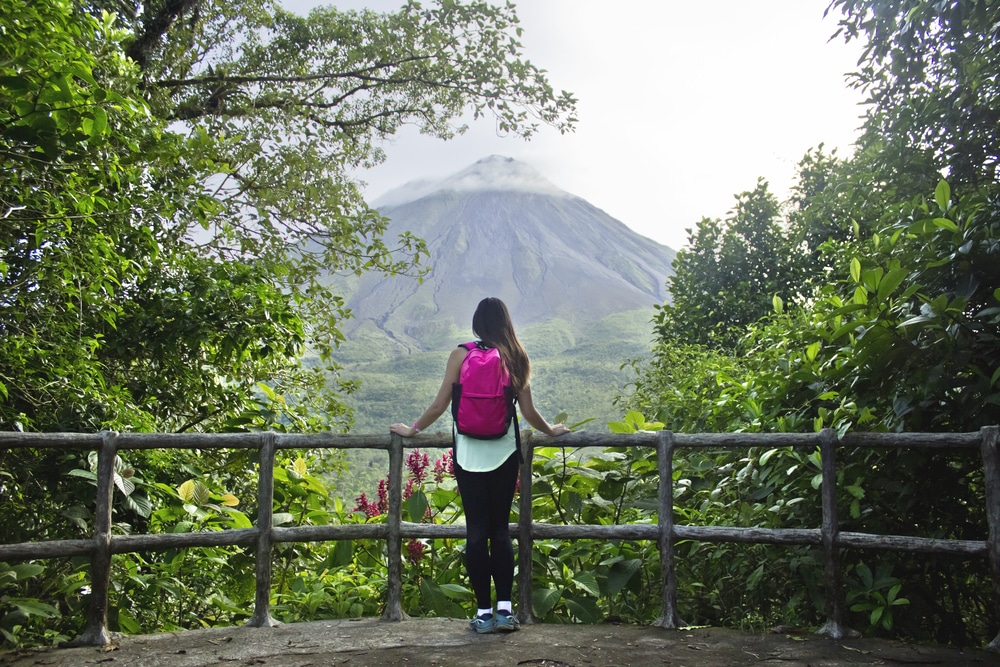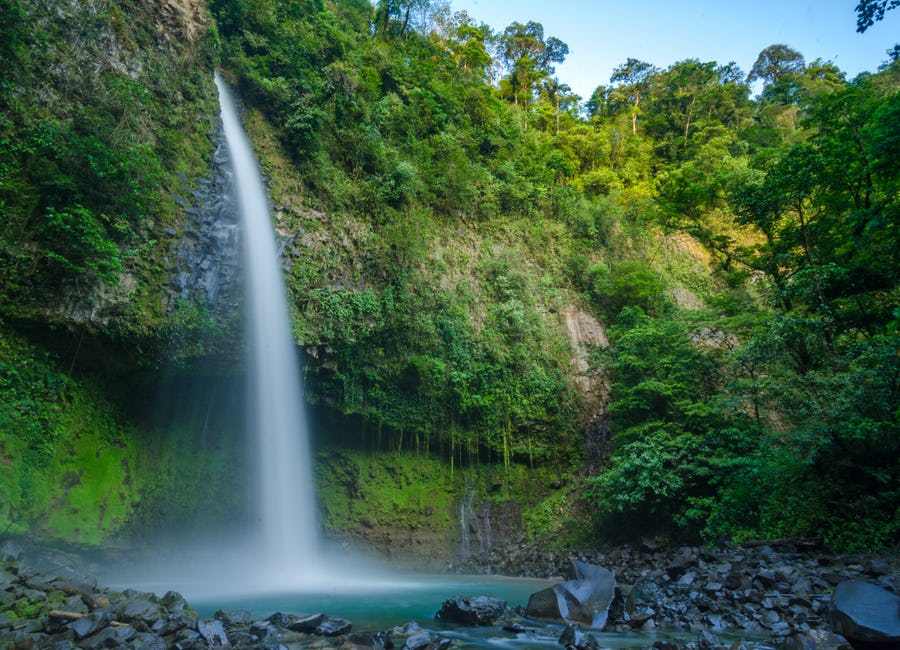Volcanoes in Costa Rica: unparalleled experiences, geological significance, and ecological impact
Lo que vas a ver en este artículo
- 1 Volcanoes in Costa Rica: unparalleled experiences, geological significance, and ecological impact
- 2 Volcanic Origin and Tectonic Forces behind the Formation of Costa Rica’s Volcanoes
- 3 Types of Volcanoes in Costa Rica
- 4 Volcanoes in Costa Rica: Popular Activities and Attractions
- 5 Volcanoes in Costa Rica: Exploring Arenal Volcano
- 6 Volcanoes in Costa Rica: Exploring Poás Volcano
- 7 Exploring Irazú Volcano in Costa Rica
- 8 Volcanoes in Costa Rica: Creating Unique Ecological Niches and Biodiversity
- 9 Volcanoes in Costa Rica: Types of Volcanic Eruptions and their Potential Hazards
Costa Rica is a country that boasts impressive natural beauty. From its breathtaking beaches to its lush tropical rainforests, Costa Rica is well-known for its ecotourism industry. But one of the most significant features of this Central American paradise are its volcanoes.
Volcanoes in Costa Rica play a significant role in the country’s natural history, geology, and biological diversity. Currently, Costa Rica has six active volcanoes: Arenal, Poas, Rincon de la Vieja, Irazu, Turrialba, and Miravalles. Each of these volcanoes has unique geological attributes, making them attractive to visitors and researchers alike.
Tourists can experience volcanoes in Costa Rica in various ways, from hiking around the volcanoes’ base to soaking in natural hot springs formed from geothermal activity. Visitors can also witness explosive eruptions from a safe distance, or even get an aerial view of the volcano and surrounding landscape by helicopter or small plane.
Their uninterrupted presence has played a crucial role in shaping the area’s diverse ecosystems. Volcanoes have created unique habitats for plant and animal life, resulting in some of the world’s most exclusive biodiversity hotspots. Costa Rica has more than 500,000 plant and animal species, with approximately 70% of those species living in the rainforest surrounding its volcanoes.
But it’s not just the natural beauty that makes Costa Rica’s volcanoes essential. Costa Rica’s government recognizes the immense value in protecting these geological landmarks. The environmental impact of active volcanoes also poses unique challenges for local residents and businesses. Costa Rica’s National Emergency Commission maintains strict safety protocols for the safety of locals and visitors in case of volcanic eruptions.
Volcanoes in Costa Rica aren’t only of interest to visitors and researchers; they also play a critical role in the country’s economy. Costa Rica’s efforts to harness its ample geothermal energy have led to substantial investments in renewable energy sources, making Costa Rica a leader in sustainable tourism and development.
Overall, volcanoes in Costa Rica are a significant attraction of the country- a testimony to its geographical and natural diversity. They are a remarkable sight and geological wonders that have shaped the country’s natural history, diverse ecosystems, and development.
Discover the breathtaking volcanoes of Costa Rica and their ecological impact! Our tours offer unparalleled experiences. Don’t miss out on this incredible adventure. Click here to check out our tours to Costa Rica: https://hoteleus.com/en-us/tours-costa-rica
Volcanic Origin and Tectonic Forces behind the Formation of Costa Rica’s Volcanoes
Volcanoes in Costa Rica are the result of years of volcanic activity that have shaped much of the country’s terrain. In fact, Costa Rica has over 200 identifiable volcanic structures, of which only five are currently active.
The formation of these volcanoes is closely linked to the country’s location on the Pacific Ring of Fire, a region located along the borders of the Pacific Ocean where tectonic plates meet and collide. This collision has led to the development of a series of geological features that include earthquakes, mountains, and volcanic formations.
The volcanic origin of Costa Rica’s mountains and volcanic structures can be traced back to the subduction of the Cocos Plate beneath the Caribbean Plate. This process has led to the formation of a series of deep trenches and faults that have created the ideal conditions for volcanoes to develop.
As pressure builds up within the Earth’s crust, molten rock known as magma rises to the surface, creating volcanic eruptions. Over time, these eruptions have produced mountains, lakes, and a range of other geological features that have shaped the face of Costa Rica.
The country’s volcanic history has had a significant impact on its ecological makeup as well. Areas surrounding active volcanoes, such as Arenal and Poás, are rich in minerals and nutrients, making them ideal for natural vegetation to thrive. These areas have also become popular tourist destinations, with visitors coming to admire the beauty of the natural surroundings.
Volcanoes in Costa Rica continue to be an integral part of the country’s geology and natural landscape, attracting visitors from around the world who are eager to witness their unparalleled beauty and experience their ecological significance.
Types of Volcanoes in Costa Rica
Costa Rica is a country that is home to numerous active and dormant volcanoes, providing visitors with unparalleled experiences and an opportunity to witness the incredible geological significance of volcanic activity and the ecological impact it has on the surrounding areas.
Amongst the diverse types of volcanoes found in Costa Rica, stratovolcanoes, shield volcanoes, and calderas are the most predominant.
Stratovolcanoes, also known as composite volcanoes, are the most well-known type of volcano in Costa Rica. These steep-sided mountains are characterized by layers of hardened lava, ash, and debris. Some of the popular stratovolcanoes in Costa Rica include Arenal Volcano, Poas Volcano, and Irazu Volcano. These volcanoes have had significant impact on the region, with some eruptions causing destruction and deaths.
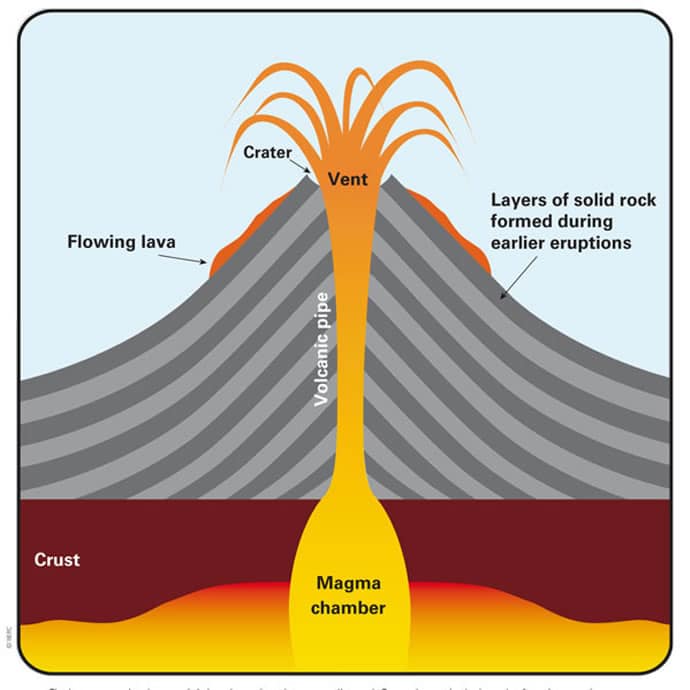
Shield volcanoes, on the other hand, are more gently sloping and wider in comparison to stratovolcanoes. These are formed by the accumulation of numerous flows of low-viscosity lava, and are commonly found in the Guanacaste region of Costa Rica. Some of the shield volcanoes found in Costa Rica include Rincon de la Vieja Volcano and Turrialba Volcano.
Calderas, which are massive, basin-shaped craters that are formed through volcano collapse, are also found in Costa Rica. The most famous caldera in Costa Rica is the Poas Volcano, which is a popular tourist destination for its stunning blue-green lagoon.
The volcanoes in Costa Rica not only offer interesting geological experiences, but also play a significant ecological role by providing fertile soil and a habitat to a unique range of species. The Arenal Volcano, for instance, is surrounded by lush rainforest, home to countless animals and plants that thrive in its nutrient-rich volcanic soil.
Overall, the diverse range of volcanoes found in Costa Rica provides visitors with an incredible insight into the power and beauty of active geological activity. From the towering stratovolcanoes to the gentle slopes of the shield volcanoes, each one offers a unique experience and is a must-visit destination for any traveler to Costa Rica.
Volcanoes in Costa Rica: Popular Activities and Attractions

Costa Rica is a land of stunning natural beauty, where the towering volcanoes dominate the landscape. These volcanoes offer unparalleled experiences for adventurous travelers, outdoor enthusiasts, and nature lovers. Costa Rican volcanoes are known for their geological significance and ecological impact, but also for the variety of popular activities and attractions they offer.
One of the best ways to experience the volcanoes in Costa Rica is by hiking the many trails that wind through the lush rainforest. The trails offer stunning views of the volcanoes, as well as the opportunity to spot wildlife and explore the unique ecosystems surrounding them.
Another must-try activity is soaking in the natural hot springs found near the volcanoes in Costa Rica. These soothing thermal baths are heated by the nearby volcanoes and offer a relaxing and rejuvenating experience.
For a truly unique experience, visitors can also take a dip in the volcanic mud baths found near the volcanoes in Costa Rica. The mineral-rich mud is said to have healing properties, and the experience of being covered in mud while surrounded by the dramatic scenery of the volcanoes is unforgettable.
Whether you choose to hike, soak, or bathe, the volcanoes in Costa Rica offer a truly unique and unforgettable experience. Visit these natural wonders and discover the amazing geological significance and ecological impact of these awe-inspiring volcanoes in Costa Rica.
Volcanoes in Costa Rica: Exploring Arenal Volcano
Costa Rica is known for its incredible biodiversity and stunning landscapes, including its many volcanoes. Among these volcanoes, one of the most iconic and popular ones is the Arenal Volcano. This volcano has a long history of eruption, with its last one occurring in 2010. However, it remains an incredible sight to see and explore, offering unparalleled experiences for visitors.
One of the ways to explore the Arenal Volcano is by hiking on its trails. The Arenal Volcano National Park offers several hiking options, ranging from easy to moderate difficulty levels. These trails provide not only scenic views of the volcano and its surroundings but also the opportunity to observe unique flora and fauna that have adapted to the volcano’s geothermal conditions.
Another way to experience the Arenal Volcano is by soaking in one of the natural hot springs nearby. These hot springs are heated by the volcano’s geothermal energy, providing visitors with a relaxing and rejuvenating experience. Additionally, some hot springs offer spectacular views of the volcano and its eruptions.
Aside from its tourism and recreational values, the Arenal Volcano also has significant geological and ecological impacts. The volcano’s eruptions have shaped the surrounding landscape, creating new habitats and ecosystems for various species. Moreover, the volcano’s geothermal energy supports unique thermophilic microorganisms that have important ecological roles in nutrient cycling and biogeochemical processes.
In conclusion, the Arenal Volcano is an essential component of the many volcanoes in Costa Rica. Its geological significance, ecological impact, and tourism values make it an incredible place to explore and experience. For those who have an appreciation for nature and adventure, the Arenal Volcano is a must-visit destination.
Volcanoes in Costa Rica offer unparalleled experiences for those seeking a glimpse into the geological significance and ecological impact of these incredible natural wonders. If you’re looking to explore one of these incredible volcanoes, consider visiting Arenal Volcano in Costa Rica.
Arenal Volcano is located in the northern region of Costa Rica and is one of the most active and accessible volcanoes in the country. The volcano last erupted in 2010 and has been closely monitored ever since.
Visitors to Arenal Volcano can enjoy a variety of activities, from hiking the surrounding trails to soaking in the natural hot springs. The volcano is also home to an abundance of wildlife, including howler monkeys, sloths, and toucans.
But Arenal Volcano is more than just a beautiful sight. It also has significant geological and ecological importance. The volcano’s eruption in 1968 led to the creation of a new crater, adding to the already impressive landscape. The area is also home to several natural reserves, including the Arenal Volcano National Park, which houses an incredible diversity of flora and fauna.
If you’re interested in learning more about the volcanoes in Costa Rica and their significance, consider visiting the official website of the National System of Conservation Areas in Costa Rica at https://www.sinac.go.cr/EN-US/ac/ACAHN/pnva/Pages/default.aspx. Here, you can discover more about Arenal Volcano and other incredible natural wonders in the area.
Volcanoes in Costa Rica: Exploring Poás Volcano
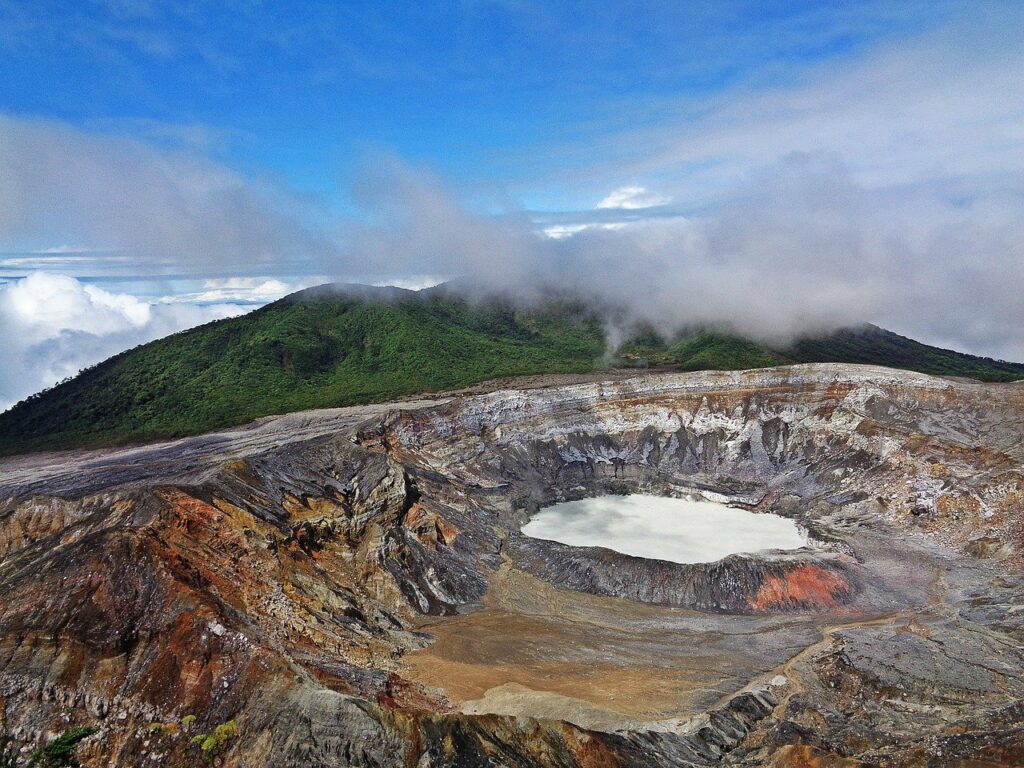
If you’re looking for a once-in-a-lifetime adventure and a chance to explore some of the world’s most captivating natural wonders, you can’t miss the incredible experience of visiting the volcanoes in Costa Rica. This small Central American country is the home of many active and dormant volcanoes that have shaped the landscape and the culture of the region.
One of the most iconic and accessible volcanoes in Costa Rica is Poás Volcano. Located in the Poás Volcano National Park, this impressive stratovolcano stands at 2,708 meters above sea level and still features a vibrant crater that releases steam and gases into the air. The Poás is an excellent option for visitors who seek to discover the geological significance of volcanoes in Costa Rica up close.
To get to Poás, you’ll need to drive or take a tour bus from the capital city, San Jose, and travel through the scenic roads of the Central Valley. Once you arrive at the park, you’ll be able to walk on the short paths that will lead you to the volcanic viewpoints, where you’ll witness the immense fumaroles and the turquoise waters of the crater lagoon.
Keep in mind that volcanoes in Costa Rica are highly sensitive environments, and the park has implemented important regulations to protect the flora and fauna from any human intervention. Therefore, visitors are not allowed to walk on the trails alone or spend an extensive amount of time inside the crater area. However, the park offer tour guides that can inform you about the rich history and ecology of the volcano, providing a profound understanding of the volcanoes in Costa Rica.
Exploring volcanoes in Costa Rica like Poás is not only a geological and cultural experience but also an ecological opportunity. These natural wonders play a vital role in the maintenance of the tropical ecosystem and provide valuable resources for the surrounding communities. Hence, visiting Poás Volcano not only offers unforgettable memories but also an opportunity to support the conservation efforts of the volcanoes in Costa Rica.
So, if you’re planning your next adventure and want to discover the geological and ecological significance of volcanoes in Costa Rica, don’t hesitate to include Poás Volcano in your bucket list. It’s undoubtedly an unparalleled experience that will leave you in awe of the beauty and power of nature.
Volcanoes in Costa Rica are some of the most unique and awe-inspiring experiences that one can have when visiting this beautiful country. The geological significance and ecological impact of these volcanoes are truly unparalleled.
For those looking to have an exciting adventure, exploring Poás Volcano is a must. This active volcano is located in the Central Valley of Costa Rica and offers visitors the chance to witness firsthand the power of mother nature.
While exploring Poás Volcano, visitors can hike the various trails that offer breathtaking views of the surrounding landscape. The main attraction, however, is the crater lake that sits atop the volcano. This sulfuric lake is constantly changing in color and offers a unique look at the geological forces that created the volcano.
Aside from its geological significance, Poás Volcano also plays an important role in the local ecology. The area surrounding the volcano is home to a variety of plant and animal species that have adapted to the harsh conditions created by the volcano’s activity.
To learn more about Volcanoes in Costa Rica, including the unparalleled experiences, geological significance, and ecological impact, be sure to check out the website for the Poas National Park of Costa Rica at: https://www.sinac.go.cr/EN-US/ac/accvc/pnvp/Pages/default.aspx
Exploring Irazú Volcano in Costa Rica
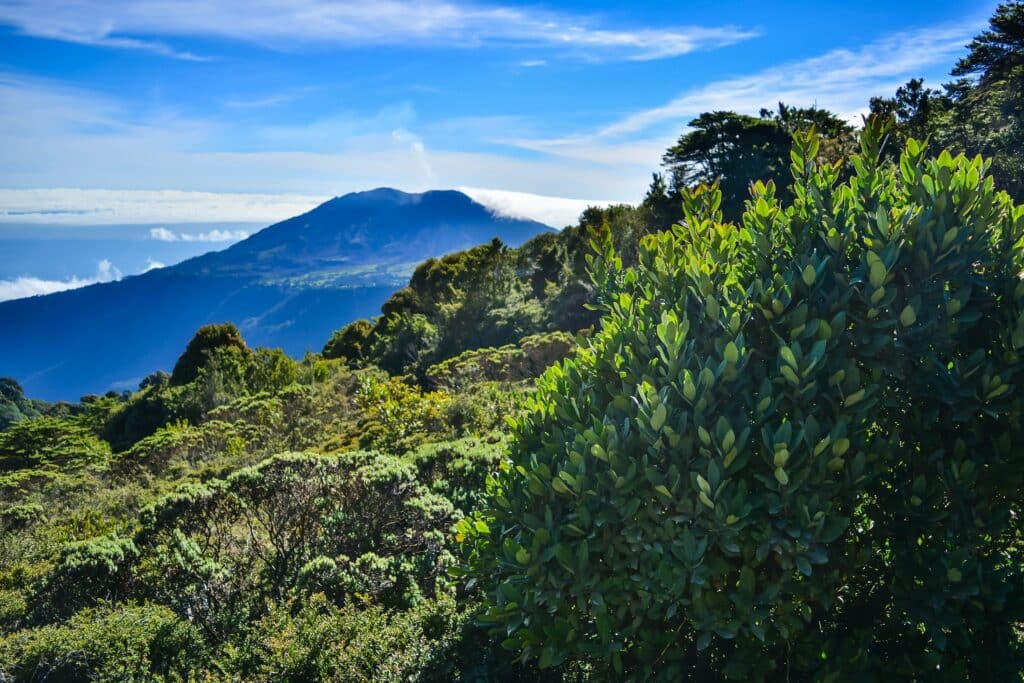
Volcanoes in Costa Rica are a must-see attraction for any visitor to the country. One of the most popular volcanoes to explore is Irazú Volcano, located in the Central Valley.
Rising to an elevation of 3,432 meters, Irazú Volcano is the highest active volcano in Costa Rica. Its name is derived from the indigenous word for “thunder and earthquake mountain.”
Visitors can hike to the summit and peer into the massive crater, which is lined with a vibrant turquoise lake. The view is truly breathtaking, and visitors can see for miles on a clear day.
Interestingly, Irazú Volcano has erupted frequently throughout history, including a notable eruption in 1963 that lasted for several years. The ash from the eruption led to significant damage and even forced the closure of the nearby airport.
Besides its geological significance, volcanoes in Costa Rica like Irazú have a major ecological impact on the country. The ash from the eruptions has created nutrient-rich soil, which is ideal for agriculture. In fact, coffee grown in the region is renowned for its unique flavor.
If you’re planning a trip to Costa Rica, be sure to include a visit to one of the many volcanoes in Costa Rica on your travel itinerary. Exploring Irazú Volcano is an unparalleled experience that offers a glimpse into Costa Rica’s stunning natural beauty and geological history.
Volcanoes in Costa Rica offer unparalleled experiences in terms of geological significance and ecological impact. If you’re interested in exploring Irazú Volcano in particular, then be sure to check out our upcoming article in which we’ll delve into this impressive natural wonder.
Whether you’re a nature enthusiast, an avid hiker, or a student of geology, a trip to Irazú Volcano is an experience not to be missed. From the striking beauty of its volcanic landscapes to its impact on the surrounding ecosystem, this volcano offers visitors a truly unique perspective on the geological forces that shape our world.
If you’re planning a trip to Costa Rica and want to include a visit to one of its many spectacular volcanoes, then stay tuned for our article on Volcanoes in Costa Rica and the unparalleled experiences they offer.
For more information on Irazú Volcano and other volcanic wonders in Costa Rica, visit https://www.sinac.go.cr/EN-US/ac/accvc/pnvi/Pages/default.aspx.
Volcanoes in Costa Rica: Creating Unique Ecological Niches and Biodiversity
Costa Rica’s volcanic landscape has significantly shaped the country’s unique ecology, providing habitats for diverse flora and fauna. Volcanoes in Costa Rica create a range of unique ecological niches, each with its own environmental conditions, such as high altitude, geothermal hot springs, or acid lakes.
The volcanic activity has allowed for diverse ecosystems to develop on the slopes of the volcanoes in Costa Rica, including cloud forests, rainforests, and dry forests. Additionally, volcanic soils are known for their fertility, which enables the lush vegetation to thrive.
The lava flows and volcanic ash have led to the creation of distinctive soil types that support unique plant species, including orchids, bromeliads, and giant ferns. These plants, in turn, support an incredible diversity of animals, such as monkeys, tapirs, jaguars, and an array of bird species, including the iconic resplendent quetzal.
The volcanoes in Costa Rica also have a significant impact on the hydrology of the region, creating natural water reservoirs that provide crucial resources for local communities and agriculture. The geothermal activity in the area also supports the generation of renewable energy and hot springs tourism, which contributes to the local economy while promoting sustainable development practices.
The volcanoes in Costa Rica play a vital ecological and economic role and have made Costa Rica a conservation and sustainable tourism destination. Preserving the biodiversity of these unique ecological niches is crucial for the future of the country and the world.
Volcanoes in Costa Rica: Types of Volcanic Eruptions and their Potential Hazards
Volcanoes in Costa Rica are an undeniable attraction for tourists and locals alike. Their beauty, ecological richness, and geological significance make them a unique destination that provides unparalleled experiences to those interested in experiencing the power of nature. However, it is essential to understand the potential hazards that volcanic activity can bring and the different types of eruptions that may occur.
Volcanic eruptions are classified into two types: explosive and effusive. Explosive eruptions occur when the magma is high in gas content and viscosity, whereas effusive eruptions happen when the magma is low in gas content and viscosity. The former type can be incredibly dangerous and explosive, while the latter tends to be less destructive and flows more smoothly.
Volcanoes in Costa Rica have the potential for both explosive and effusive eruptions. The Arenal Volcano is a great example of an explosive volcano that became active in 1968 and remained so for the next 42 years, causing a significant amount of damage, including numerous fatalities. Today you can visit Volcan Arenal safely.
The Poás Volcano is known for its effusive eruptions, with the latest occurring in 2017, leading to its temporary closure due to the high-risk level for tourists. Check today for news about the volcano if you want to visit.
Safety should be your top priority. Our comprehensive article offers crucial tips and expert advice to ensure your peace of mind throughout your journey. From researching potential risks to packing essential gear, we’ve got you covered: Is it safe to travel to Costa Rica? Ensuring a Safe and Memorable Journey
The potential hazards associated with volcanic eruptions include lava flows, ash and gas emissions, lahars, and pyroclastic flows. Lava flows are streams of molten rock that can cause serious damage to infrastructure and homes. Ash and gas emissions can also pose health risks to humans and wildlife living in the area, and they can also cause significant air travel disruptions in some cases.
Volcanoes in Costa Rica are also vulnerable to lahars, which are volcanic mudflows. These fast-moving mixtures of ash, water, and other debris can travel long distances and cause severe damage in their path. Finally, pyroclastic flows are a mixture of ash, gas, and rock fragments that flow down a volcano’s slopes and can reach extremely high temperatures, causing severe burns and fatalities.
While volcanoes in Costa Rica are incredibly remarkable, it is essential to understand the different types of volcanic eruptions and the potential hazards they can bring.
Visitors to these unique destinations should always be prepared and informed to ensure their safety and enjoy the unparalleled experiences that these natural wonders provide.


